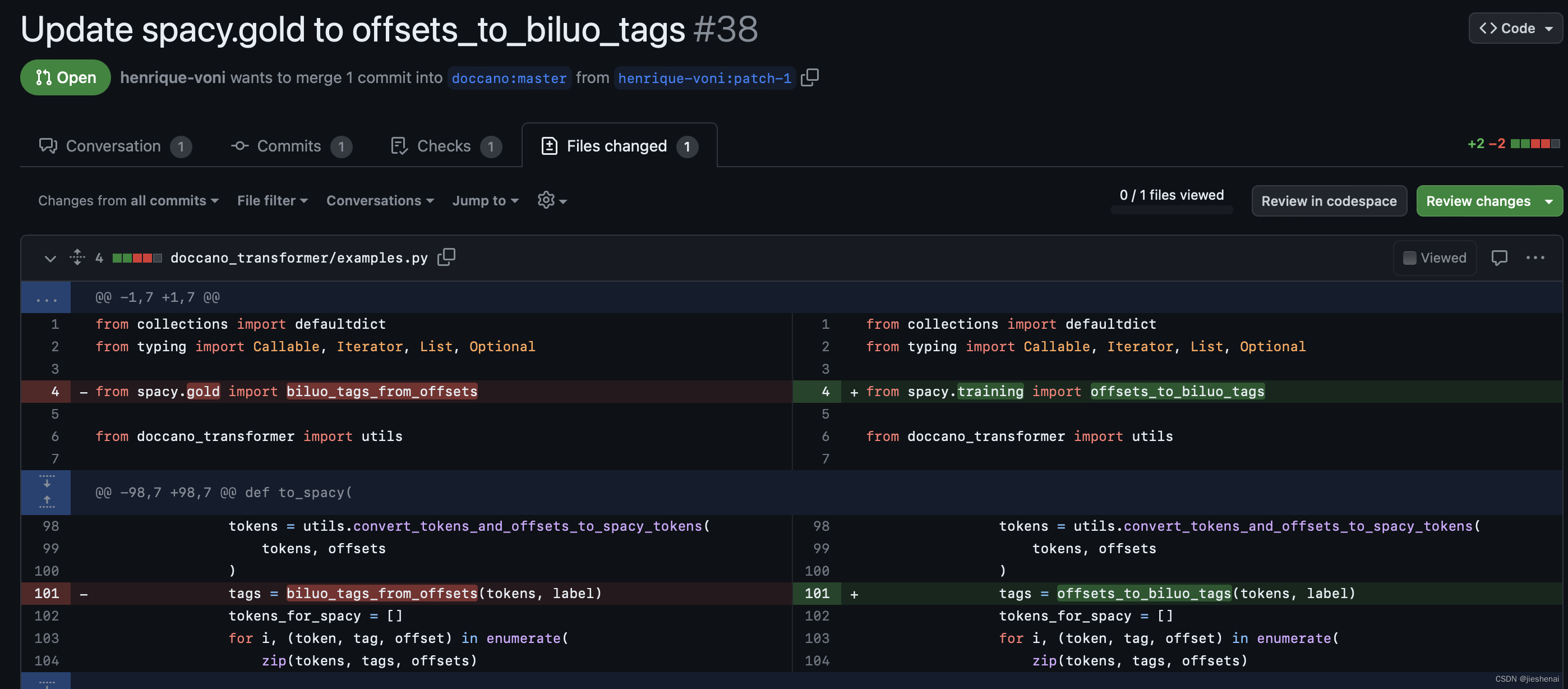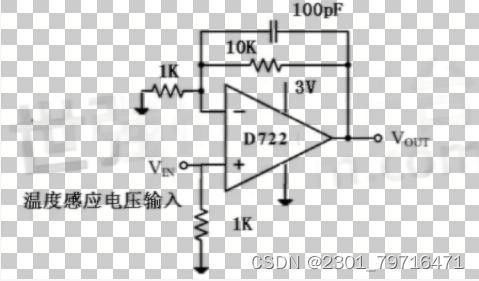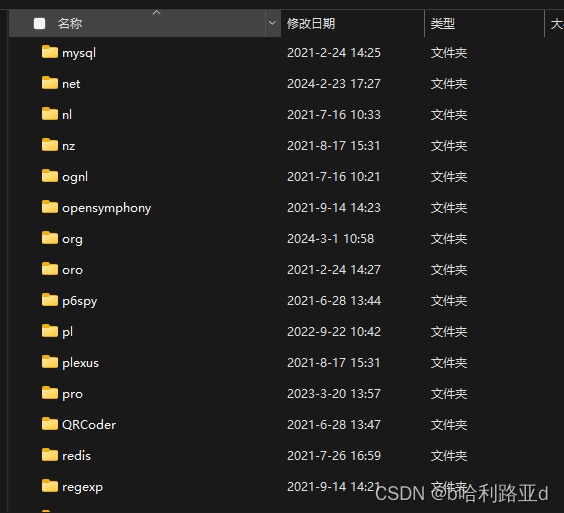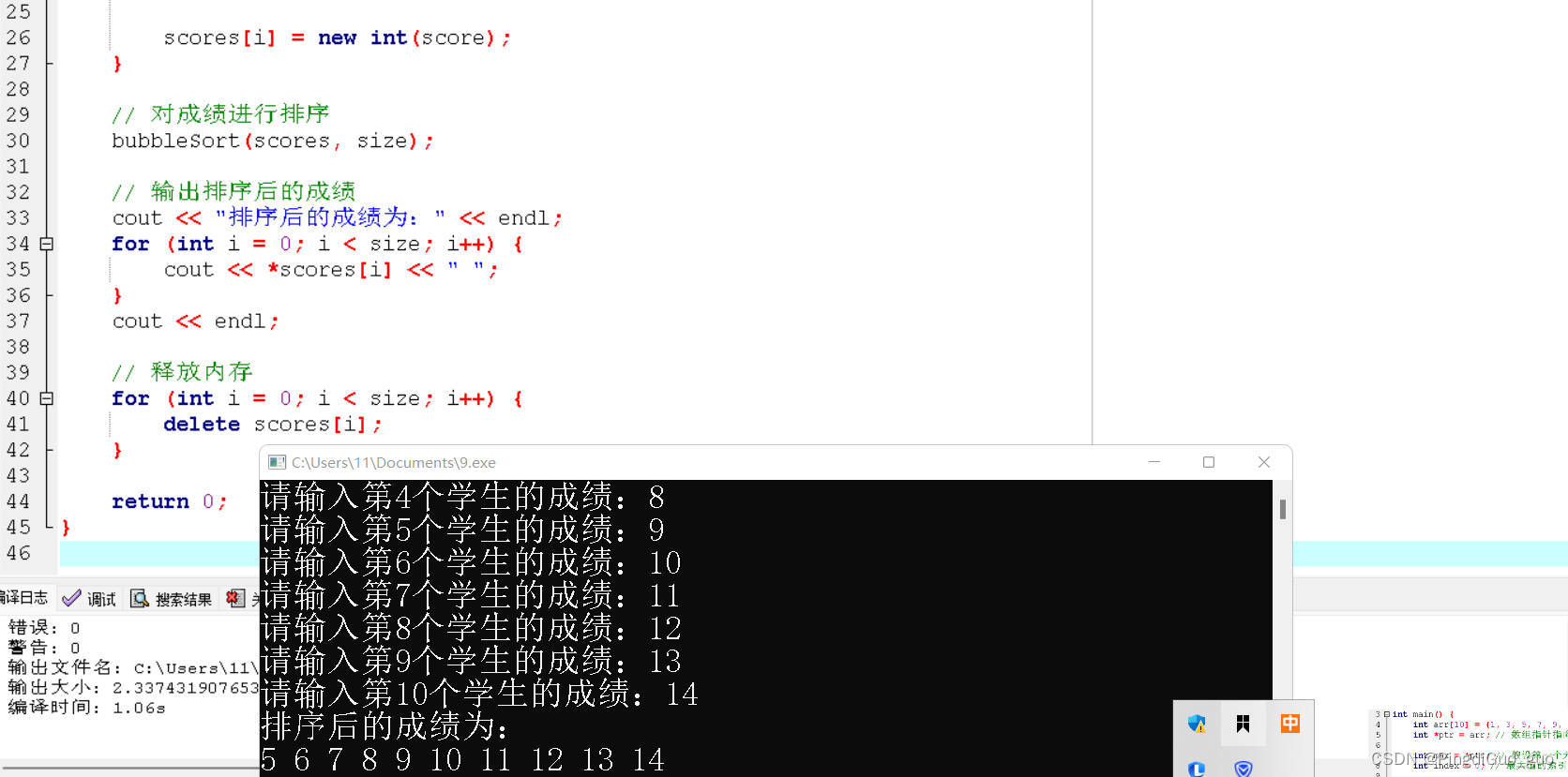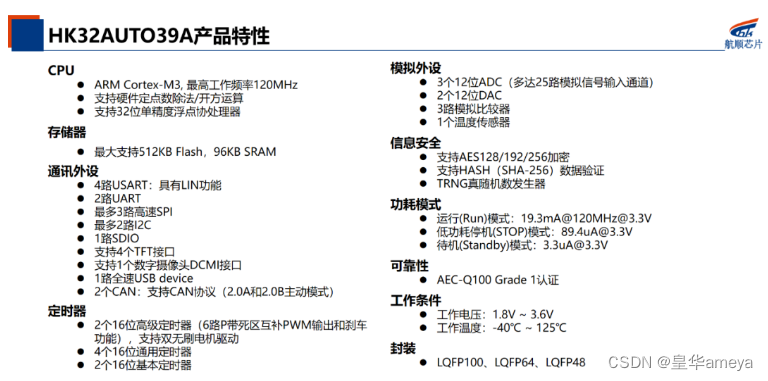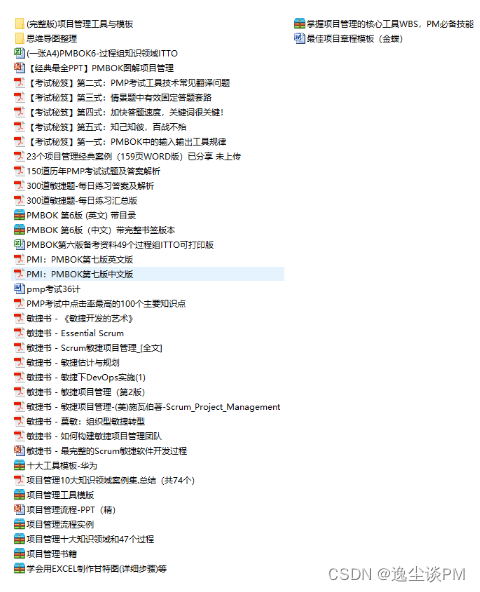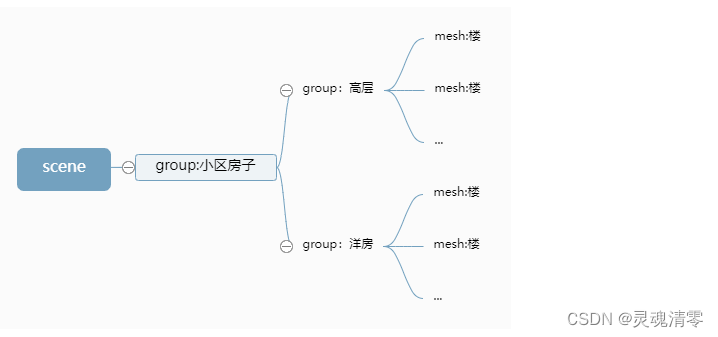Pytorch 复习总结,仅供笔者使用,参考教材:
- 《动手学深度学习》
- Stanford University: Practical Machine Learning
本文主要内容为:Pytorch 深度学习计算。
本文先介绍了深度学习中自定义层和块的方法,然后介绍了一些有关参数的管理和读写方法,最后介绍了 GPU 的使用方法。
Pytorch 语法汇总:
- Pytorch 张量的常见运算、线性代数、高等数学、概率论 部分 见 Pytorch 复习总结1;
- Pytorch 线性神经网络 部分 见 Pytorch 复习总结2;
- Pytorch 多层感知机 部分 见 Pytorch 复习总结3;
- Pytorch 深度学习计算 部分 见 Pytorch 复习总结4;
- Pytorch 卷积神经网络 部分 见 Pytorch 复习总结5;
- Pytorch 现代卷积神经网络 部分 见 Pytorch 复习总结6;
目录
- 一. 自定义块
- 1. 顺序块
- 2. 自定义前向传播
- 3. 嵌套块
- 二. 自定义层
- 1. 无参数层
- 2. 有参数层
- 三. 参数管理
- 1. 参数访问
- 2. 参数初始化
- 3. 延后初始化
- 四. 文件读写
- 1. 加载和保存张量
- 2. 加载和保存模型参数
- 五. GPU 计算
层是神经网络的基本组成单元,如全连接层、卷积层、池化层等。块是由层组成的更大的功能单元,用于构建复杂的神经网络结构。块可以是一系列相互关联的层,形成一个功能完整的单元,也可以是一组层的重复模式,用于实现重复的结构。下图就是多个层组合成块形成的更大模型:

在实际应用中,经常会需要自定义层和块。
一. 自定义块
1. 顺序块
nn.Sequential 本质上就是一个顺序块,通过在块中实例化层来创建神经网络。 nn.Module 是 PyTorch 中用于构建神经网络模型的基类,nn.Sequential 和各种层都是继承自 Module,nn.Sequential 维护一个由多个层组成的有序列表,列表中的每个层连接在一起,将每个层的输出作为下一个层的输入。
如果想要自定义一个顺序块,必须要定义以下两个关键函数:
- 构造函数:将每个层按顺序逐个加入列表;
- 前向传播函数:将每一层按顺序传递给下一层;
import torch
from torch import nn
class MySequential(nn.Module):
def __init__(self, *args):
super().__init__()
for idx, module in enumerate(args):
self._modules[str(idx)] = module
def forward(self, X):
# self._modules的类型是OrderedDict
for block in self._modules.values():
X = block(X)
return X
net = MySequential(
nn.Linear(20, 256),
nn.ReLU(),
nn.Linear(256, 10)
)
X = torch.rand(2, 20)
output = net(X)
上述示例代码中,定义 net 时会自动调用 __init__(self, *args) 函数,实例化 MySequential 对象;调用 net(X) 相当于 net.__call__(X),会自动调用模型类中定义的 forward() 函数,进行前向传播,每一层的传播本质上就是调用 block(X) 的过程。
2. 自定义前向传播
nn.Sequential 类将前向传播过程封装成函数,用户可以自由使用但没法修改传播细节。如果想要自定义前向传播过程中的细节,就需要自定义顺序块及 forward 函数,而不能仅仅依赖预定义的框架。
例如,需要一个计算函数 f ( x , w ) = c ⋅ w T x f(\bold x,\bold w)=c \cdot \bold w ^T \bold x f(x,w)=c⋅wTx 的层,并且在传播过程中引入控制流。其中 x \bold x x 是输入, w \bold w w 是参数, c c c 是优化过程中不需要更新的指定常量。为此,定义 FixedHiddenMLP 类如下:
import torch
from torch import nn
from torch.nn import functional as F
class FixedHiddenMLP(nn.Module):
def __init__(self):
super().__init__()
self.rand_weight = torch.rand((20, 20), requires_grad=False) # 优化过程中不需要更新的指定常量
self.linear = nn.Linear(20, 20)
def forward(self, X):
X = self.linear(X)
X = F.relu(torch.mm(X, self.rand_weight) + 1)
X = self.linear(X) # 两个全连接层共享参数
while X.abs().sum() > 1: # 控制流
X /= 2
return X
3. 嵌套块
多个层可以组合成块,多个块还可以嵌套形成更大的模型:
import torch
from torch import nn
from torch.nn import functional as F
class FixedHiddenMLP(nn.Module):
def __init__(self):
super().__init__()
self.rand_weight = torch.rand((20, 20), requires_grad=False) # 优化过程中不需要更新的指定常量
self.linear = nn.Linear(20, 20)
def forward(self, X):
X = self.linear(X)
X = F.relu(torch.mm(X, self.rand_weight) + 1)
X = self.linear(X) # 两个全连接层共享参数
while X.abs().sum() > 1: # 控制流
X /= 2
return X.sum()
class NestMLP(nn.Module):
def __init__(self):
super().__init__()
self.net = nn.Sequential(nn.Linear(20, 64), nn.ReLU(),
nn.Linear(64, 32), nn.ReLU())
self.linear = nn.Linear(32, 16)
def forward(self, X):
return self.linear(self.net(X))
net = nn.Sequential(
NestMLP(),
nn.Linear(16, 20),
FixedHiddenMLP()
)
X = torch.rand(2, 20)
output = net(X)
二. 自定义层
和自定义块一样,自定义层也需要实现构造函数和前向传播函数。
1. 无参数层
import torch
from torch import nn
class CenteredLayer(nn.Module):
def __init__(self):
super().__init__()
def forward(self, X):
return X - X.mean()
net = nn.Sequential(nn.Linear(8, 128), CenteredLayer())
X = torch.rand(4, 8)
output = net(X)
print(output.mean()) # tensor(0., grad_fn=<MeanBackward0>)
2. 有参数层
import torch
from torch import nn
import torch.nn.functional as F
class MyLinear(nn.Module):
def __init__(self, in_units, out_units):
super().__init__()
self.weight = nn.Parameter(torch.randn(in_units, out_units))
self.bias = nn.Parameter(torch.randn(out_units,))
def forward(self, X):
linear = torch.matmul(X, self.weight.data) + self.bias.data
return F.relu(linear)
net = nn.Sequential(
MyLinear(64, 8),
MyLinear(8, 1)
)
X = torch.rand(2, 64)
output = net(X)
print(output) # tensor([[11.9497], [13.9729]])
三. 参数管理
在实验过程中,有时需要提取参数,以便检查或在其他环境中复用。本节将介绍参数的访问方法和参数的初始化。
1. 参数访问
net.state_dict()/net[i].state_dict():返回模型或某一层参数的状态字典;net[i].weight.data/net[i].bias.data:返回某一层的权重 / 偏置参数;net[i].weight.grad:返回某一层的权重参数的梯度属性。只有调用了backward()方法后才能访问到梯度值,否则为 None;
import torch
from torch import nn
net = nn.Sequential(nn.Linear(4, 8), nn.ReLU(), nn.Linear(8, 1))
X = torch.rand(size=(2, 4))
output = net(X)
print(net.state_dict())
'''
OrderedDict([('0.weight', tensor([[ 0.2178, -0.3286, 0.4875, -0.0347],
[-0.0415, 0.0009, -0.2038, -0.1813],
[-0.2766, -0.4759, -0.3134, -0.2782],
[ 0.4854, 0.0606, 0.1070, 0.0650],
[-0.3908, 0.2412, -0.1348, 0.3921],
[-0.3044, -0.0331, -0.1213, -0.1690],
[-0.3875, -0.0117, 0.3195, -0.1748],
[ 0.1840, -0.3502, 0.4253, 0.2789]])), ('0.bias', tensor([-0.2327, -0.0745, 0.4923, -0.1018, 0.0685, 0.4423, -0.2979, 0.1109])), ('2.weight', tensor([[ 0.1006, 0.2959, -0.1316, -0.2015, 0.2446, -0.0158, 0.2217, -0.2780]])), ('2.bias', tensor([0.2362]))])
'''
print(net[2].state_dict())
'''
OrderedDict([('weight', tensor([[ 0.1006, 0.2959, -0.1316, -0.2015, 0.2446, -0.0158, 0.2217, -0.2780]])), ('bias', tensor([0.2362]))])
'''
print(net[2].bias)
'''
Parameter containing:
tensor([0.2362], requires_grad=True)
'''
print(net[2].bias.data)
'''
tensor([0.2362])
'''
如果想一次性访问所有参数,可以使用 for 循环递归遍历:
import torch
from torch import nn
net = nn.Sequential(nn.Linear(4, 8), nn.ReLU(), nn.Linear(8, 1))
X = torch.rand(size=(2, 4))
output = net(X)
print(*[(name, param.data) for name, param in net[0].named_parameters()])
'''
('weight', tensor([[-0.0273, -0.4942, -0.0880, 0.3169],
[ 0.2205, 0.3344, -0.4425, -0.0882],
[ 0.1726, -0.0007, -0.0256, -0.0593],
[-0.3854, -0.0934, -0.4641, 0.1950],
[ 0.2358, -0.4820, -0.2315, 0.1642],
[-0.2645, 0.2021, 0.3167, -0.0042],
[ 0.1714, -0.2201, -0.3326, -0.2908],
[-0.3196, 0.0584, -0.1059, 0.0256]])) ('bias', tensor([ 0.3285, 0.4167, -0.2343, 0.3099, 0.1576, -0.0397, -0.2190, -0.3854]))
'''
print(*[(name, param.shape) for name, param in net.named_parameters()])
'''
('0.weight', torch.Size([8, 4])) ('0.bias', torch.Size([8])) ('2.weight', torch.Size([1, 8])) ('2.bias', torch.Size([1]))
'''
如果网络是由多个块相互嵌套的,可以按块索引后再访问参数:
import torch
from torch import nn
def block1():
return nn.Sequential(nn.Linear(4, 8), nn.ReLU(),
nn.Linear(8, 4), nn.ReLU())
def block2():
net = nn.Sequential()
for i in range(4):
net.add_module(f'block {i}', block1())
return net
net = nn.Sequential(block2(), nn.Linear(4, 1))
X = torch.rand(size=(2, 4))
output = net(X)
print(net)
'''
Sequential(
(0): Sequential(
(block 0): Sequential(
(0): Linear(in_features=4, out_features=8, bias=True)
(1): ReLU()
(2): Linear(in_features=8, out_features=4, bias=True)
(3): ReLU()
)
(block 1): Sequential(
(0): Linear(in_features=4, out_features=8, bias=True)
(1): ReLU()
(2): Linear(in_features=8, out_features=4, bias=True)
(3): ReLU()
)
(block 2): Sequential(
(0): Linear(in_features=4, out_features=8, bias=True)
(1): ReLU()
(2): Linear(in_features=8, out_features=4, bias=True)
(3): ReLU()
)
(block 3): Sequential(
(0): Linear(in_features=4, out_features=8, bias=True)
(1): ReLU()
(2): Linear(in_features=8, out_features=4, bias=True)
(3): ReLU()
)
)
(1): Linear(in_features=4, out_features=1, bias=True)
)
'''
print(net[0][1][0].bias.data)
'''
tensor([-0.0083, 0.2490, 0.1794, 0.1927, 0.1797, 0.1156, 0.4409, 0.1320])
'''
2. 参数初始化
PyTorch 的 nn.init 模块提供了多种初始化方法:
nn.init.constant_(layer.weight, c):将权重参数初始化为指定的常量值;nn.init.zeros_(layer.weight):将权重参数初始化为 0;nn.init.ones_(layer.weight):将权重参数初始化为 1;nn.init.uniform_(layer.weight, a, b):将权重参数按均匀分布初始化;nn.init.xavier_uniform_(layer.weight):nn.init.normal_(layer.weight, mean, std):将权重参数按正态分布初始化;nn.init.orthogonal_(layer.weight):将权重参数初始化为正交矩阵;nn.init.sparse_(layer.weight, sparsity, std):将权重参数初始化为稀疏矩阵;
初始化时,可以直接 net.apply(init_method) 初始化整个网络,也可以 net[i].apply(init_method) 初始化某一层:
import torch
from torch import nn
def init_normal(m):
if type(m) == nn.Linear:
nn.init.normal_(m.weight, mean=0, std=0.01)
nn.init.zeros_(m.bias)
def init_constant(m):
if type(m) == nn.Linear:
nn.init.constant_(m.weight, 1)
nn.init.zeros_(m.bias)
net = nn.Sequential(nn.Linear(4, 8), nn.ReLU(), nn.Linear(8, 1))
X = torch.rand(size=(2, 4))
output = net(X)
# net.apply(init_normal)
net[0].apply(init_normal)
net[2].apply(init_constant)
3. 延后初始化
有些情况下,无法提前判断网络的输入维度。为了代码能够继续运行,需要使用延后初始化,即直到数据第一次通过模型传递时,框架才会动态地推断出每个层的大小。由于 PyTorch 的延后初始化功能还处于开发阶段,API 和功能随时可能变化,下面只给出简单示例:
import torch
from torch import nn
net = nn.Sequential(nn.LazyLinear(256), nn.ReLU(), nn.LazyLinear(10))
print(net)
'''
Sequential(
(0): LazyLinear(in_features=0, out_features=256, bias=True)
(1): ReLU()
(2): LazyLinear(in_features=0, out_features=10, bias=True)
)
'''
X = torch.rand(2, 20)
net(X)
print(net)
'''
Sequential(
(0): Linear(in_features=20, out_features=256, bias=True)
(1): ReLU()
(2): Linear(in_features=256, out_features=10, bias=True)
)
'''
四. 文件读写
可以使用 torch.load(file) 和 torch.save(x, file) 函数读写张量和模型参数。
1. 加载和保存张量
只要保证读写格式一致即可:
import torch
from torch import nn
from torch.nn import functional as F
x = torch.arange(4)
y = torch.zeros(4)
torch.save([x, y],'xy.pth')
x2, y2 = torch.load('xy.pth')
print(x2, y2) # tensor([0, 1, 2, 3]) tensor([0., 0., 0., 0.])
保存张量的文件格式没有要求,甚至可以没有后缀名。因为 torch.save(x, file) 函数本质上是使用 Python 的 pickle 模块来序列化对象并将其保存到文件中的,pickle 模块负责将 Python 对象转换为字节流,而文件的扩展名本身并不影响 pickle 模块的工作。
2. 加载和保存模型参数
因为模型一般是自定义的类,所以加载模型前要先实例化一个相同类别的变量,再将模型参数加载到该变量中:
import torch
from torch import nn
from torch.nn import functional as F
class MLP(nn.Module):
def __init__(self):
super().__init__()
self.hidden = nn.Linear(4, 2)
self.output = nn.Linear(2, 3)
def forward(self, x):
return self.output(F.relu(self.hidden(x)))
net = MLP()
X = torch.randn(size=(2, 4))
Y = net(X)
print(net.state_dict())
'''
OrderedDict([('hidden.weight', tensor([[-0.0154, -0.3586, -0.3653, -0.2950],
[ 0.2591, -0.2563, 0.3833, 0.1449]])), ('hidden.bias', tensor([0.1884, 0.3998])), ('output.weight', tensor([[-0.4805, 0.4077],
[-0.0933, 0.0584],
[ 0.3114, 0.6285]])), ('output.bias', tensor([-0.2552, -0.6520, 0.3290]))])
'''
torch.save(net.state_dict(), 'mlp.pth')
net2 = MLP()
net2.load_state_dict(torch.load('mlp.pth'))
print(net2.state_dict())
'''
OrderedDict([('hidden.weight', tensor([[-0.0154, -0.3586, -0.3653, -0.2950],
[ 0.2591, -0.2563, 0.3833, 0.1449]])), ('hidden.bias', tensor([0.1884, 0.3998])), ('output.weight', tensor([[-0.4805, 0.4077],
[-0.0933, 0.0584],
[ 0.3114, 0.6285]])), ('output.bias', tensor([-0.2552, -0.6520, 0.3290]))])
'''
也可以只保存单层参数:
import torch
from torch import nn
from torch.nn import functional as F
class MLP(nn.Module):
def __init__(self):
super().__init__()
self.hidden = nn.Linear(4, 2)
self.output = nn.Linear(2, 3)
def forward(self, x):
return self.output(F.relu(self.hidden(x)))
net = MLP()
X = torch.randn(size=(2, 4))
Y = net(X)
print(net.state_dict())
'''
OrderedDict([('hidden.weight', tensor([[-0.2937, 0.1589, 0.2349, 0.1130],
[ 0.4170, 0.2699, 0.3760, 0.0201]])), ('hidden.bias', tensor([ 0.3914, -0.1185])), ('output.weight', tensor([[0.0884, 0.2572],
[0.1547, 0.0164],
[0.3386, 0.5151]])), ('output.bias', tensor([-0.5032, -0.2515, -0.4531]))])
'''
torch.save(net.hidden.state_dict(), 'mlp.pth')
net2 = MLP()
net2.hidden.load_state_dict(torch.load('mlp.pth'))
print(net2.state_dict())
'''
OrderedDict([('hidden.weight', tensor([[-0.2937, 0.1589, 0.2349, 0.1130],
[ 0.4170, 0.2699, 0.3760, 0.0201]])), ('hidden.bias', tensor([ 0.3914, -0.1185])), ('output.weight', tensor([[ 0.2318, 0.3837],
[ 0.2380, 0.6463],
[-0.6014, 0.3717]])), ('output.bias', tensor([-0.3154, -0.0078, -0.2676]))])
'''
五. GPU 计算
在 PyTorch 中,CPU 和 GPU 分别可以用 torch.device('cpu') 和 torch.device('cuda') 表示。如果有多个 GPU,可以使用 torch.device(fcuda:i') 来表示,cuda:0 和 cuda 等价。可以查询所有可用 GPU 也可以指定 GPU:
import torch
def try_gpu(i=0):
if torch.cuda.device_count() >= i + 1:
return torch.device(f'cuda:{i}')
return torch.device('cpu')
def try_all_gpus():
devices = [torch.device(f'cuda:{i}')
for i in range(torch.cuda.device_count())]
return devices if devices else [torch.device('cpu')]
device = torch.device('cuda:0' if torch.cuda.is_available() else 'cpu')
张量和网络模型都可以通过 .cuda(device) 函数移动到 GPU 上:
import torch
from torch import nn
net = nn.Sequential(
nn.Linear(2, 64),
nn.ReLU(),
nn.Linear(64, 32)
)
X = torch.randn(size=(4, 2))
loss = nn.MSELoss()
device = torch.device('cuda:0' if torch.cuda.is_available() else 'cpu')
net.cuda(device=device)
X.cuda(device=device)
loss.cuda(device=device)
